
| Walk 26 - Ruapehu Crater Walk |
|
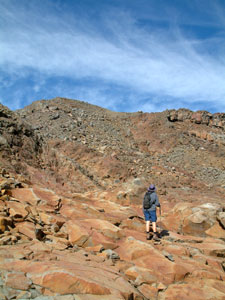 Starting the scramble up Ruapehu |
|
|
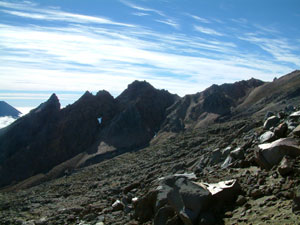 Silhouette of The Pinnacles |
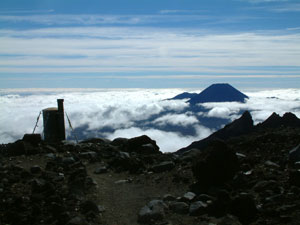 Another in the "loo with a view" series |
|
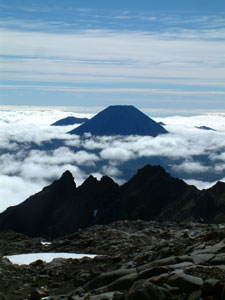 The cone of Ngaurahoe rising behind The Pinnacles |
|
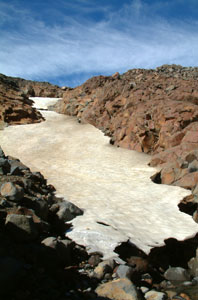 Remnant snow drift in an old lava gulley |
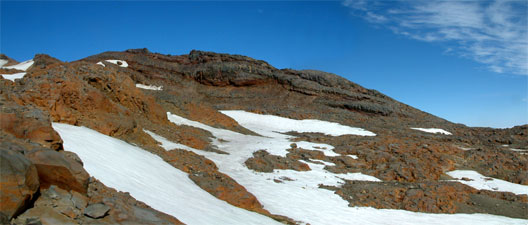 Orange, grey and white; colours of the upper slopes of Ruapehu |
It was becoming clear that a band of cloud was moving in and slowly rising. We climbed steadily up the orange and grey rocks of the oddly named Restful Ridge towards Paratetaitonga, one of several peaks on the hugecrater rim. Behind the long northern spur of Paratetaitonga, the distant cone of Taranaki rose above the cloud bank in splendid isolation. By the time that we reached the final climb up the loose scree slope of the crater rim, the clouds had reached the base of Ruapehu. |
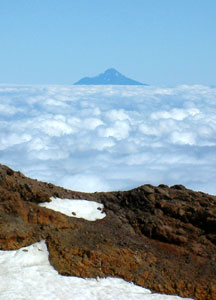 Taranaki floating on a sea of cloud |
 Near the rim - dark fresh flow from the 1995 eruption below Paratetaitonga |
|
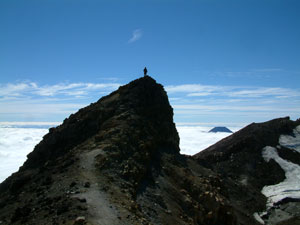 Nello on the Crater Rim |
 Cathedral Peak and the view to the south-east |
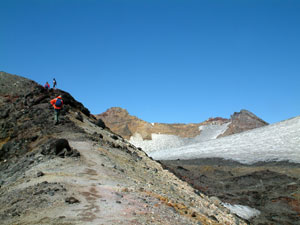 Climbing Dome Ridge |
||
|
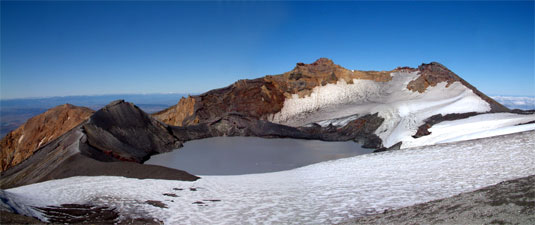 View over Crater Lake framed by Pyramid and Tahurangi Peak (the highest point of Ruapehu) |
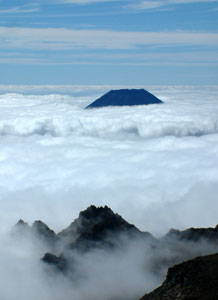 Ngaurohoe becomes an island as cloud envelopes The Pinnacles |
When we reached the rim edge looking back down the ski field, the cloud had already begun to envelope the middle slopes, where we had begun the walk. The tops of The Pinnacles were just about to disappear and the cone of Ngaurohoe was now an island in a white billowing sea. Down is a lot quicker than up on scree and rock, and the chance to do a bit of boot-skiing on a long remnant snowdrift saw us rapidly down to the halfway point, where we met the rising cloud. |
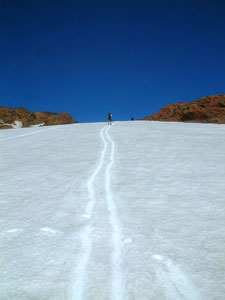 A good slope for boot-skiing - Nello follows my tracks down |
|
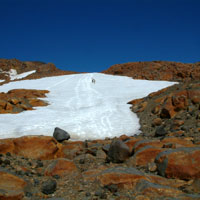 Orange, grey and white landscape of Ruapehu |
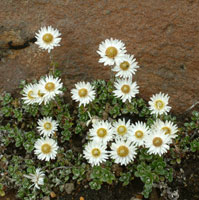 One of few plants clinging to the rocky substrate |
||
|
||
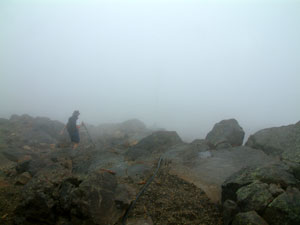 Nello descending into the mists of Ruapehu |
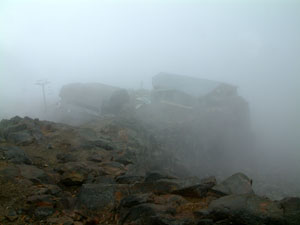 The Top Station emerging from the mist |
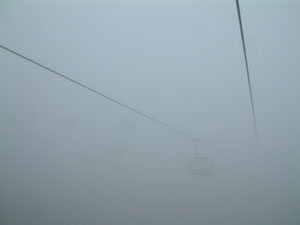 Down the disappearing chairlift - tramp over |
|